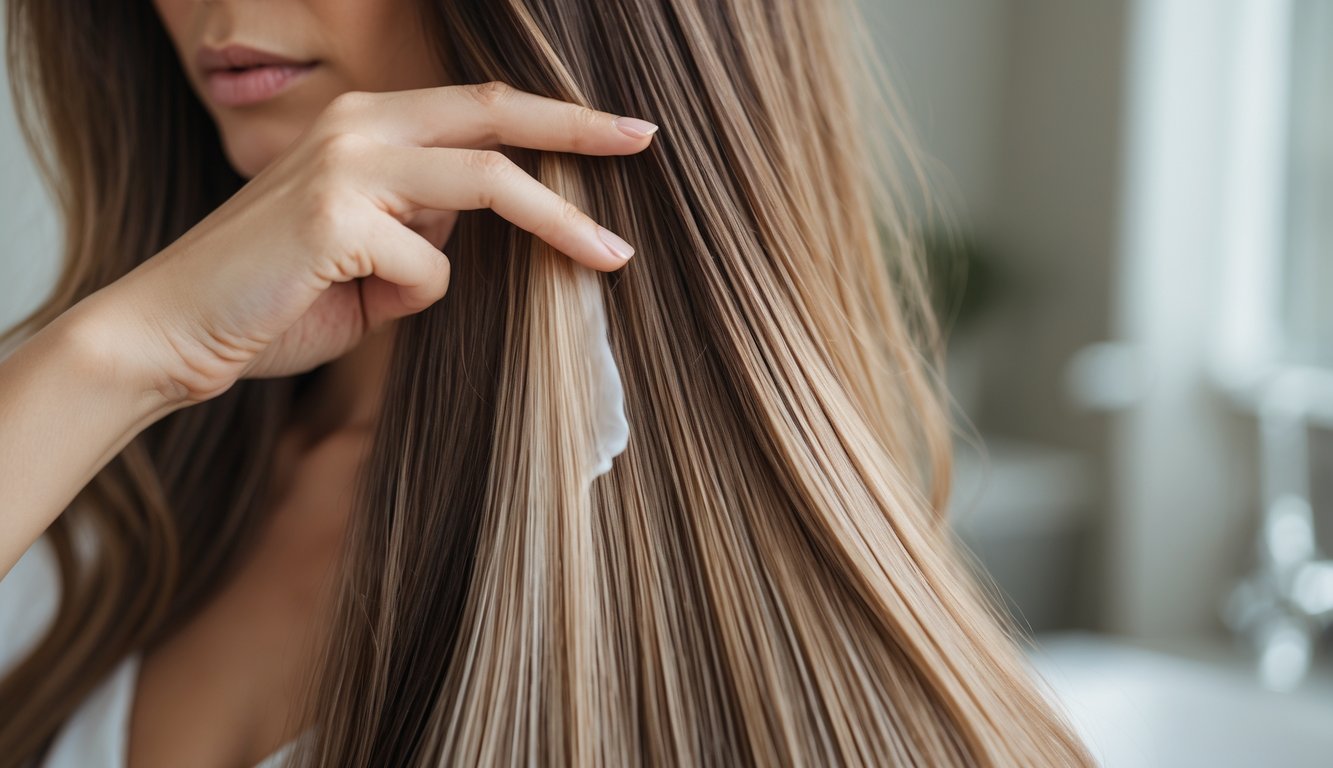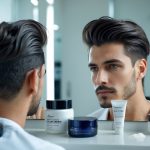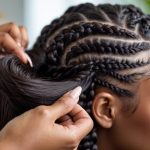
Color Type: Permanent vs. Semi-Permanent vs. Temporary
I’ve lost count of how many friends have picked a “permanent” dye and then freaked out when their shower water turned clown-red two weeks later. It’s never just about picking a color, is it? You’re fighting sulfates, UV, hard water, and whatever cosmic forces decide to mess with your hair that month.
Permanent Hair Dye and Color Maintenance
Does anyone actually trust “permanent” anymore? I sure don’t. These dyes dig in deep—developer (yeah, hydrogen peroxide, pick your poison) cracks open the cuticle, and the color molecules rush in. If you want to cover gray or go lighter, this is your only real option.
But then, roots. By week four, you’ve got the skunk stripe; by week eight, it’s full-on ombre. Touching up means more peroxide, more damage, more time with a protein mask while doomscrolling on your phone. Supposedly, sulfate-free shampoos help, and after talking to a bunch of colorists (including one Matrix educator who quoted “up to 30% less fade if you avoid hot water”), I’ve realized: you can’t win if you wash a lot or swim. Sorry.
Try explaining porosity to someone who flat-irons daily. Fried hair just doesn’t hold color, no matter what. Even permanent dye flakes out on those crispy ends.
Semi-Permanent Hair Dye: Pros and Cons
All those fantasy colors—teal, rose gold, neon whatever—are semi-permanent. No ammonia, no strong developer, just a coat on the outside. Less damage, sure, but don’t expect to look like a mermaid for more than a month.
Nobody told me this: if you don’t bleach first, the pastel won’t show. Semi-perms don’t lighten, they just layer on top, like painting with a highlighter on brown paper. Brands say “12 to 24 shampoos” but if you swim or wash daily, you’ll be back to your old color in a week. Also, if there’s buildup, the dye won’t even stick. So you have to strip your hair, then dye, then baby it. Exhausting.
Truth: semi-permanent dye is low-commitment, but also low-reward if you’re impatient or, let’s be honest, lazy.
Temporary Color and Washout Rates
People still ask if spray-on color survives rain. Nope. Temporary dyes are just makeup for hair—powders, sprays, gels, whatever. They sit on top, look fun for a day, then vanish with one shampoo or a sweaty workout. Sometimes they stain things—pillowcases, shirts, your hands. I saw a Clairol rep call these temporary color “weightless,” but if you overdo it, you’ll feel it everywhere. The only real trick is not touching your head, which is basically impossible.
Aftercare Strategies for Long-Lasting Color
Why do my towels always look more purple than my hair? Probably because I keep ignoring basic advice—ditch harsh shampoos, actually use conditioner, maybe read an ingredient list for once. Antioxidants show up in everything now, but who really checks for them except bored dermatologists and TikTokers?
Cool Water Rinses and Their Benefits
There’s always that one person yelling “rinse with cold water!” like it’s magic. Is it? I mean, hot water definitely bleeds out color, especially if you’ve got semi-permanent dye or brights. Famous colorists like Rita Hazan swear by cold rinses, claim it keeps color molecules in the hair shaft longer. It’s a pain, and honestly, who sticks with it for every wash? I can’t. Still, pro stylists at eSalon say you’ll get better vibrancy for a couple weeks just from this. I guess it’s worth the goosebumps.
Deep Conditioning Treatments and Hair Masks
Every drugstore bottle promises “damage reversal,” but they’re mostly water, maybe some dimethicone. If you want your color to last, deep conditioning isn’t optional. Those 3-minute “miracles”? Lies. Most good masks need 10–20 minutes. I have a client who leaves Olaplex on all night, swears it saves her color even after a clarifying shampoo disaster. Stylists at Chez Vous Hair say to alternate protein and moisture masks—don’t double up on protein unless you like crunchy hair. Protein: once a week, max. Moisture: as often as you want. Rainy days always mess up my results, no idea why, but mask nights are non-negotiable.
Antioxidant-Rich Formulas for Protection
I keep buying shampoos with açai, green tea, pomegranate—hoping something will save my color. Antioxidants are supposed to fight “free radicals” (what do those even look like?), especially if you’re in the sun or have weird water. Dermatologists love vitamin C serums for the scalp, but nobody tells me why my “color-safe” shampoo turns orange after a few months. One survey found fewer complaints about brassiness with antioxidant-heavy formulas. But not every “antioxidant” product is legit—look for real extracts near the top of the list. Sometimes I just pour leftover green tea into a spray bottle and call it a leave-in. Maybe it helps. Maybe it’s just the smell. Who knows. But if I skip the antioxidants, my hair gets dull. Maybe it’s in my head, but whatever, I keep doing it.
Special Considerations for Popular Hair Colors
You know what bugs me? People say “color-safe” works for everyone. Try using a “color-safe” shampoo on red hair and see how long that lasts. Sun, water, and sketchy shampoos hunt down bright shades like it’s their job.
Maintaining Red Hair
Red hair always fades first. The color molecules are huge, or so every stylist says, so they just wash right out. Ten days, tops, if you’re lucky. The fade isn’t subtle—redheads know a hot shower plus sulfates means orange water and sad hair by payday.
Here’s the real trick: skip clarifying shampoos unless you’ve got serious buildup, because even “gentle” ones will kill your color. A 2024 Color Collective survey found over 67% of stylists swear by cold water rinses and low heat, but it’s the ingredients that matter. Dodge sodium lauryl sulfate, and honestly, anti-dandruff shampoos are the secret enemy—All About The Gloss called them out for fade-speeding.
If you want to keep your red, grab a shampoo labeled for color retention, with protein or UV filters. Glosses help, but sometimes even those can’t save you from sunshine and mousse.



